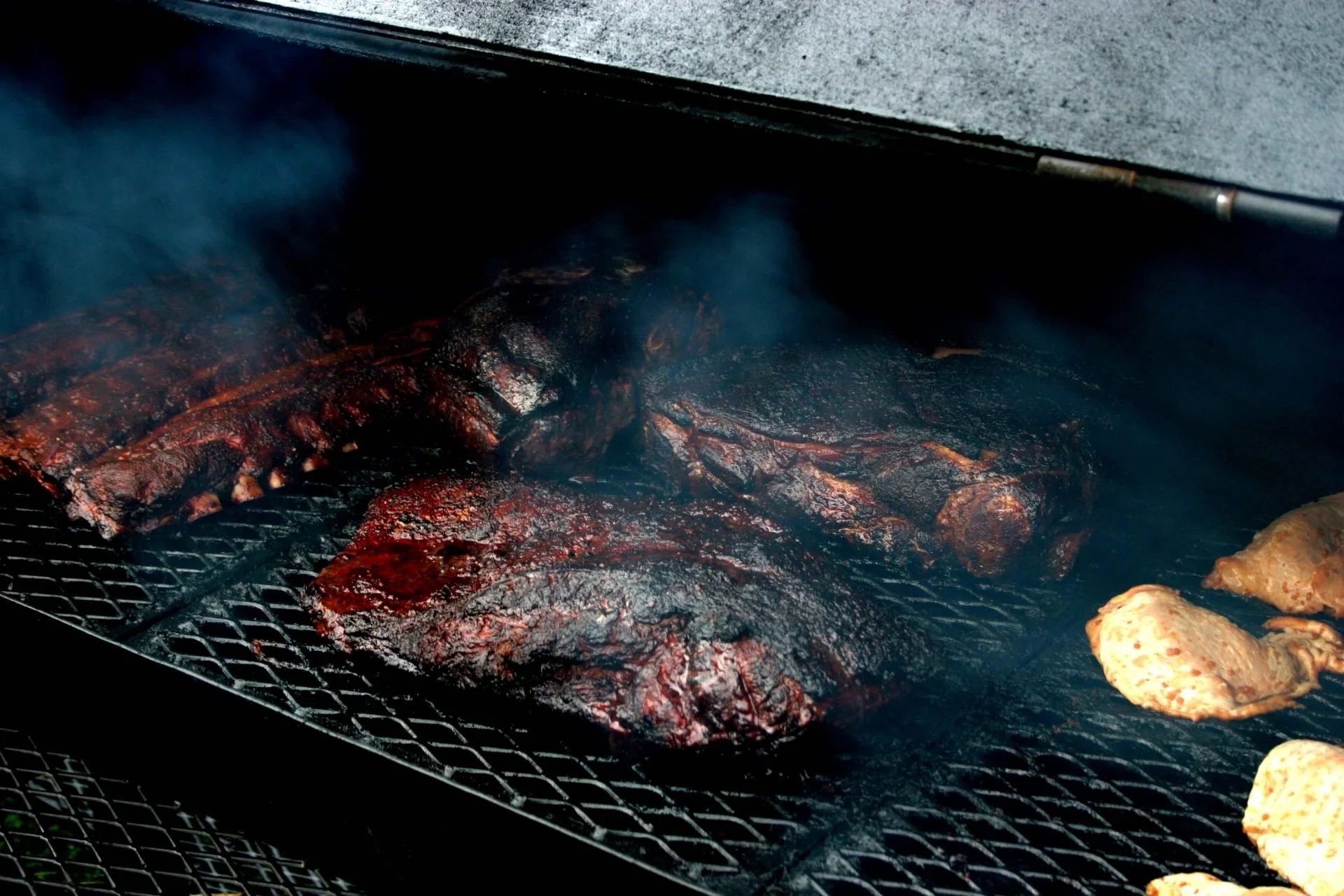Breaking Down Southern Sub-Cuisines
Discover > Truly Texan > Breaking Down Southern Sub-Cuisines
Southern cuisine is a very broad umbrella term that doesn’t tell you much about the individual influences, techniques, and dishes that make each sub-cuisine its own. After all, there is a vast contrast between seafood-based Cajun & Creole cooking and the BBQ/meat-based Texan cuisine, or between the wild game dishes of the Appalachians vs the fresh, citrusy twist of Floribbean food.
BBQ
Barbecue (What wine goes well with barbecue?) is both a cooking method that involves cooking meat outdoors over a fire as well as a social gathering that’s frankly almost impossible to turn down. Anyone who lives in the south knows that a BBQ is about a lot more than just dry flaming meat on a grill or in a smoker. It’s an entire subculture of its own with different regional styles that produce vastly different kinds of barbecue. Unsurprisingly, some intense rivalries are centered around it. It’s pride for a lot of southerners, a reminder of home, and a lifestyle that's taken seriously.
BBQ is centered around meat but of course wouldn’t be what it is without dishes like coleslaw, mac’n’cheese, cornbread, or any number of side dishes that make it unique. The cut of meat and how it’s prepared depends on the region you go to. There are 4 main regional styles of BBQ in the south: Carolinas, Kansas City, Memphis, and Texas-style.
Texas BBQ
Texas BBQ traces its roots back to the German and Czech immigrants who settled in central Texas during the 29th century. It’s revered for its beef brisket (What wine goes well with beef brisket?) and pork products, particularly sausages. There are 4 different styles of Texas BBQ: Central, East, South, and West Texas BBQ.
Central Texas BBQ is often just seasoned with a simple salt and pepper dry rub then smoked low and slow over mesquite, pecan, or oak wood. The meat hardly ever touches a bun (unless it’s on the side) and is more often served on a plate with butcher paper.
East Texas BBQ also involves low and slow cooking over indirect heat more often than not with hickory, which grows abundantly there. East Texas is known for its ‘fall off the bone’ quality bbq and is often marinated in sweet tomato-based marinades. Pulled pork and beef brisket are often served in a bun in east Texas often with pickles, coleslaw, and/or hot sauce (how long does hot sauce last?).
South Texas BBQ is often referred to as barbacoa because of its close ties to Mexican cuisine. It’s characterized by its sweet sauces like molasses-based BBQ sauce which locks in moisture. Cow’s tongue and head are also a common dish.
West Texas BBQ or Cowboy BBQ is typically cooked directly over an open flame. Mesquite is one of the few trees that grow abundantly in west texas so that is more often than not what is used.
Carolina Style BBQ
Carolina BBQ is often centered around pork, often served shredded, pulled, chopped, and sometimes sliced. It’s one of the oldest forms of BBQ and is characterized by spiced vinegar-based mop sauces. The different regions of North Carolina and South Carolina are also home to their own regional specialties:
North Carolina is famous for its spit roasting in the east where they often chop and mix all the parts of the meat once it’s been cooked. The west is famous for its Piedmont style or Lexington style barbecue, after the town of Lexington, North Carolina. Home to many old barbecue restaurants and the Lexington Barbecue Festival.
South Carolina BBQ is characterized by its yellow Carolina gold sauce made by mixing yellow mustard, brown sugar, vinegar, and other spices.
Memphis Style BBQ
Memphis style BBQ puts a big emphasis on ribs served wet (brushed with sauce before and after cooking) or dry (seasoned with a dry rub). It’s also famous for its BBQ sandwiches using primarily pork shredded by hand. Memphis was also willing to expand the reach of BBQ becoming the home of dishes like BBQ spaghetti, BBQ pizza, and BBQ nachos.
Kansas City BBQ
Kansas City BBQ was bought there by Memphian Henry Perry. It uses a very wide variety of meats like pork, beef, and lamb often covered with a spice rub and slow-smoked over a variety of different woods. It is more often than not also accompanied by thick tomato-based BBQ sauce.
Soul Food
Soul food is an ethnic sub-cuisine of the south centered around the ingredients and dishes African American slaves made both for themselves and the white families they served during the American colonial period. Slaves had to eat calorie-dense foods to keep up with the arduous physical labor, placing importance on breaded and deep-fried foods (What wine goes well with fried foods?). Slaves who could cook well were often also given special treatment, putting a large emphasis on food as a whole.
Ingredients that are used in soul food that was first domesticated in Africa include several legumes like black-eyed peas (how long do black-eyed peas last?), peppers, melons, sorghum, (how long does sorghum last?) certain rice (how long does rice last?) strains, and most notably, okra. Since slaves were legally unable to learn to read or write throughout the colonial era, recipes were often passed down orally, a tradition that holds to this day.
The word ‘soul’ became popular to describe aspects of the African American culture in the US throughout the 1960s.
Tex-Mex
Tex-Mex is a cuisine exclusive to Texas derived from the Tejano people that lived there from the late colonial period. It’s characterized by its heavy reliance on meat (mainly beef, pork, or chicken), cheese, beans, peppers, spices, and tortillas.
Tex-Mex also derives some influence from early Spanish settlers as seen through the use of Spanish spices like cumin. The cuisine hasn’t changed much since it started spreading across the country, in fact, much of the cooking was almost the exact same on either side of the border until after the Civil War.
Cajun & Creole
Louisiana is best known for cajun and creole food. The difference? Creole is the inner city cuisine that was fed to upper-class Spanish and french descendants. Cajun is more of a countryside cuisine that heavily relies on what the swamps and bayous had to offer: frogs, alligators, catfish, crawfish, and duck. (What wine goes well with duck?)
The cuisine is a combination of west African, Acadian, Spanish, French, and German influences. A lot of the dishes include rice, beans, sausage, chicken, and a combination of carrots, onions, and green bell peppers also known as the holy trinity of cajun cooking.
Okra, garlic, paprika, and cayenne pepper are also staples of cajun and creole cuisine. Roux using animal fat or vegetable oil (how long does vegetable oil last?) is a common technique for classic dishes like gumbo, gravy, chowder, and many more.
The Appalachians
The Appalachians start in northeast Mississippi and stretch through the north of Alabama, up to west Tennessee and Kentucky, on the east side of the Carolinas, straight through the Virginias, all the way up to Pennsylvania, New York, and Maine. A lot of English and Scotsmen settled in that area and they heavily relied on local game like venison (What wine goes well with venison?), squirrel, and rabbit. Fruits and berries that grow there locally like blackberries, blueberries, cherries, apples, peaches, and pears are also widely used.
Appalachia remains a very poor part of the south to this day and therefore still relies heavily on hunting, trapping, and foraging what the wild has to offer. Cobblers, deep-fried foods, stews, and BBQ, and other rustic dishes are the ‘standard’ of Appalachian cuisine.
Kentucky
The food they eat in Kentucky is exactly what everyone thinks of when they think of southern food. Fried chicken dishes, fried catfish, hush puppies, chicken fried steak, green beans, fried green tomatoes, mint juleps, biscuits & gravy, and many more.
Common ingredients in Kentucky are chicken, pork, rabbit, squirrel, walnuts (how long do walnuts last?), pecans, sorghum, grits (how long do grits last?), wild forage, potatoes, cabbage, and whiskey. Kentucky is also known for its pit barbecues that feature heavy doses of vinegar-based sauces.
Floribbean
The heavy influence from Hispanic, Caribbean, and Asian immigrants throughout the 19th century forms the unique food you find there today. A lot of tropical fruits like starfruit, mango, papaya, coconut, and key limes, as well as a lot of fresh seafood, beef, rice, rum, and several types of peppers.
Lowcountry
Lowcountry is generally accepted to be the cuisine of the South Carolina Low country that stretches from Allendale, east towards Williamsburg county, then south to Georgetown, and west all the way to Jasper county.
Seafood like catfish, turtle, crab (What wine goes well with crab?), oysters (What wine goes well with oysters?), and shrimp are staples in Lowcountry cuisine. The subtropical climate allows for very effective rice farming. Much of the region is also covered by the black belt of the American south, making it one of the homes of soul food.
Looking for the best brisket restaurants across Texas? Click here.
Learn more about beef brisket. Click here.
What Is Tex Mex? Six Differences Between TexMex and Traditional Mexican Food. (What wine goes well with Mexican food?) Read more.
Looking for more information to cooking steakhouse quality steak? Here’s a guide.
For your Ultimate Texas BBQ tips and tricks, click here.





